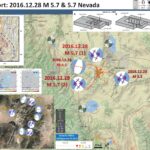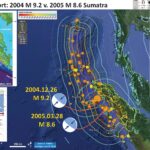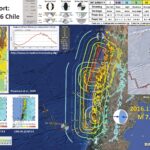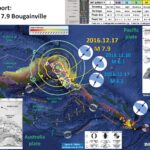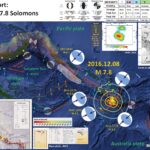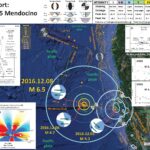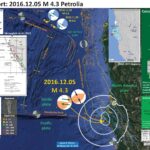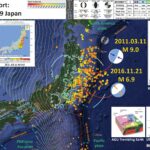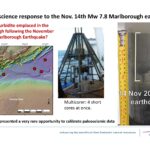Well, this is an interesting series of earthquakes. They occurred in a region that has not had any earthquakes (given the USGS NEIC database). However, as Jascha Polet pointed out on twitter, there was a swarm to the east in…
Earthquake Anniversary: Sumatra-Andaman 2004 M 9.2 & 2005 M 8.6
On 26 December 2004 there was an earthquake with a magnitude of M 9.2 along the Sumatra-Andaman subduction zone (SASZ). This earthquake is the third largest earthquake ever recorded by modern seismometers and ruptured nearly 2,000 km of the megathrust…
Earthquake Report: Chile!
Last night we had a large earthquake in the southern region of the 1960 M 9.5 Valdivia earthquake. Below are some USGS websites for the three large earthquakes for this region that I mention in my interpretive poster. Based on…
Earthquake Report: Bougainville!
Early this morning my time there was a large earthquake along the San Cristobal Trench, a segment of a convergent plate boundary formed by the subduction of the Solomon Sea plate eastwards beneath the Pacific plate. There was an M…
Earthquake Report: Solomons!
Yesterday there began a swarm of seismic activity along the southern Solomon trench. What began with a M 7.8 earthquake on 2016.12.08, there have been many aftershocks including a M 6.9 this morning (my time). Below is my interpretive poster…
Earthquake Report: Mendocino fault Update #1
Today is one of my busiest days of the semester. I am administering a final and my two classes are presenting their video projects. Then, we had this M 6.5 earthquake in the wee hours and a M 7.7 (prelim…
Earthquake Report: Mendocino fault!
I was awake and just logging into my laptop, still in bed, when I first felt some movement. The movement was slight and not impulsive, so I thought it was a small earthquake. Then the shaking reappeared. This is when…
Earthquake Report: Petrolia (CA)
This morning there was a good shaker that was widely felt across the region. I did not feel it. I was probably driving at the time, or grading papers, which can have the same sense-deadening effect. Here is the USGS…
Earthquake Report: Japan!
While I was returning from my research cruise offshore of New Zealand, there was an earthquake offshore of Japan in the region of the 2011.01.11 M 9.0 Tohoku-Oki Earthquake. Japan is one of the most seismically active regions on Earth.…
Earthquake Report: Kaikōura, New Zealand Post # 02
Here is the first update on the 2016.11.13 (UTC) Mw 7.8 Kaikoura Earthquake and associated fault ruptures, ground shaking, and other geologic effects. I will be preparing several more posts on this subject. I was invited to participate on a…

